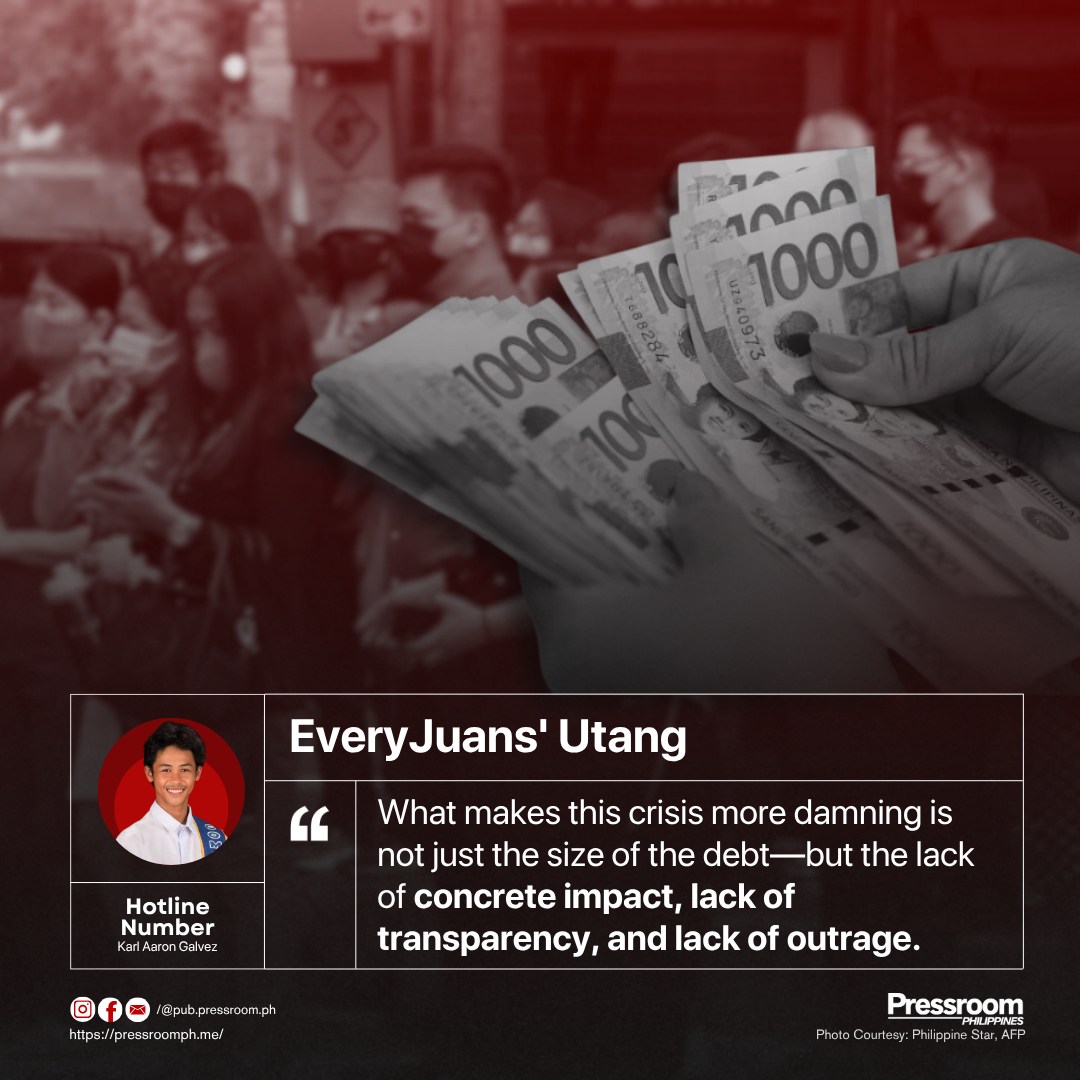What would you do with P153,000?
Buy a secondhand car? Start a business? Send someone to college? Now imagine handing that amount over to pay for a national debt you didn’t choose—and barely benefit from.
According to the Bureau of the Treasury, the Philippines’ national debt has ballooned to over P17 trillion. Divide that across roughly 110 million Filipinos, and each of us—newborns included—owes around P153,000.
This isn’t just a number. Or a theoretical debt. It’s real. And sooner or later, we will all feel it—in taxes, in inflation, in crumbling public services, and in a government too cash-strapped to give back what it owes its people.
The government says it borrowed to “recover from the pandemic,” to “build infrastructure,” to “stimulate the economy.” But ask yourself: did your community recover? Did your barangay get better roads, working health centers, or stable jobs?
Because for every flyover in the city, there are ten rural bridges still rotting. For every fancy government ribbon-cutting, there’s a flood-prone street swallowing homes. For every contractor paid, there’s a family unpaid for the land the project bulldozed.
We borrowed trillions, yet the average Filipino still hustles to survive. So where did the money go? Filipino families aren’t just paying with pesos—they’re paying with opportunity, dignity, and security.
We pay through rising inflation, regressive taxes, and limited job creation. When interest payments on debt consume over a trillion pesos a year, what’s left for public services?
Even worse, this debt becomes an excuse. “No budget” becomes the government’s default answer to wage hikes, social aid, and long-overdue reforms. Meanwhile, billions are funneled into confidential funds, foreign trips, and overpriced projects. Debt becomes a shield—not for the people, but for the government’s failure to deliver.
What makes this crisis more damning is not just the size of the debt—but the lack of concrete impact, lack of transparency, and lack of outrage.
Who’s tracking how these trillions are spent? Who’s held accountable for waste and mismanagement? Who ensures that borrowed money reaches the people who need it most? Right now, very few. And as long as citizens are kept in the dark, the debt will grow—and so will our silence.
P153,000 is the cost of broken systems—the result of decades of corruption, inefficiency, and political convenience.
We must stop treating public debt as an abstract figure. It’s not. It is paid by real people, in real time—with every pothole unpatched, every underpaid teacher, every untreated illness. This is the cost of being Filipino in a system where borrowing is easy, delivery is rare—and accountability is rarer.
So again: Are you ready to pay P153,000?
If not, then we must demand answers. Demand transparency. Demand a government that doesn't just borrow in our name, but works in our interest.






